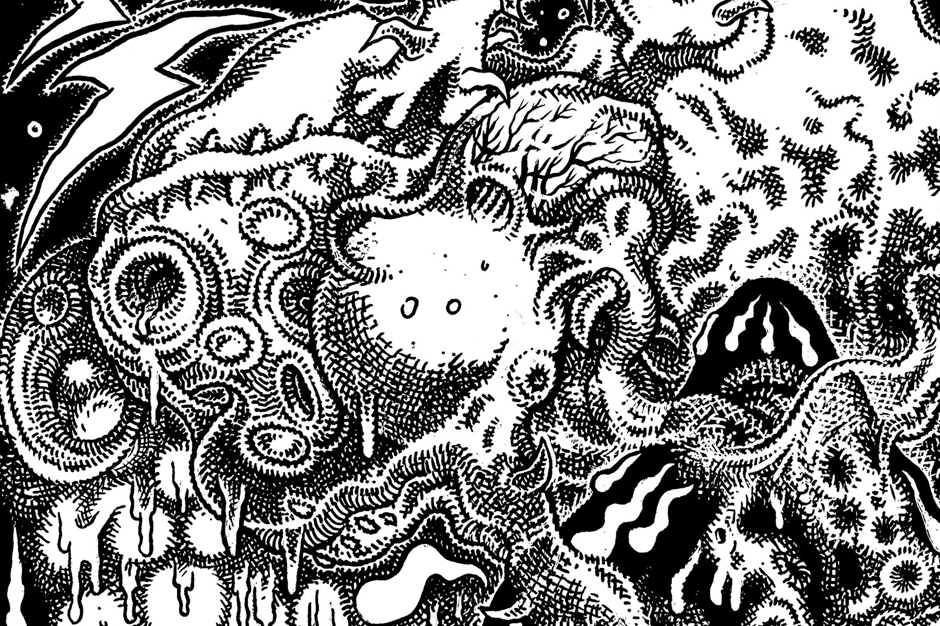Thirty-two years ago today, I sat on the roof of our house and watched a plume of ash rise 80,000 feet in the air above Mount St. Helens, whose newly reduced dome, some 70 miles away, peeked above the trees at the end of our street.
The volcano had been simmering for months, but this was the Big One: a 24-megaton explosion that obliterated nearly a sixth of the mountain’s volume, vaporized Spirit Lake and reduced 230 square miles of forest to rubble. Naturally, being 9 years old, I was over the moon. Of course, I sympathized with the victims and their families. But that didn’t stand in the way of finding the eruption thrilling: this was history happening — geological history — practically right in my backyard. Which, pretty soon, took on a literal truth as well, as ash began drifting down like a lackluster snowfall, carpeting the grass with a thin, grey film. In the coming weeks, I’d be tasked with cleaning ash mud out of our gutters, and my father would wear a surgical mask as he mowed the lawn, just as the nightly news recommended; it felt like I’d been given a walk-on role in a real-life thriller. We packed up the ash in plastic medicine bottles, which I distributed to my cabin-mates at a California summer camp as a memento of my homeland; it was probably my parents’ idea, but to me, those vials had the mystical properties of sacred relics. There were bottles to spare, eventually relegated to a dusty shelf in my father’s workshop. They’re gone now, and so is he. I wish I had kept one.
In honor of that fateful blast, then, five new records that touch upon mountains, molten rock, and memory.
Shackleton, Music for the Quiet Hour / The Drawbar EPs (Woe to the Septic Heart)
All manner of volcanological metaphors could surely be applied to the music of Shackleton, whether we’re talking about his seismic bass rumble or his music’s bleak, sooty affect. (Hell, he’s even recorded a song called “Mountains of Ashes.”) And with this epic new release, he draws the blast zone extra wide, across two CDs (or, if you’re lucky enough to find it, a 3×12″-and-CD boxset) and two hours and 22 minutes of music. Ambient drone and radiophonic gurgle collide with the Berlin producer’s Fourth World futurist beats, and classical choir samples are interleaved with leathery hand drums and Eastern scales. It sounds very much like Shackleton — there’s really no one else making music like this right now — and, in terms of its sheer sonics, it might be his most engrossing record yet.
San Gabriel, VOLFE (Time No Place)
San Gabriel is the solo alias of Los Angeles’ Butchy Fuego, a member of the Thrill Jockey group Pit Er Pat as well as one of the Boredoms’ touring musicians and a collaborator with the likes of Julia Holter and Sun Araw. From the sound of this eight-track mini album, he’s been listening to plenty of Shackleton himself: Fuego’s music is rougher and less refined than Shackleton’s, but it incorporates similar world-music timbres and, at times, a comparable sense of dread. Stylistically, the record runs the gamut from spindly, Casio-tone hip-hop to uptempo bass mutations. “Club Mate,” presumably a tribute to the German energy drink, marries Nintendo melodies and elephant cries to speedy, fractured breakbeat techno; “Can’t Work” sounds like a woozy, kaleidoscopic fusion of juke and dancehall reggae. There’s a distinctly globalist perspective at work, roping in elements of cumbia, moombahton and South African house; “Montaña de Tormenta” (which translates, coincidentally, as “Mountain of Torment”) is a kind of super-charged, kuduro-inflected U.K. funky that reminds me a little of Portugal’s DJ Marfox. All in all, it’s a smart, inspired record that blazes its own trail.
Rene Bandaly Family, “Tanki Tanki” (Lebanon)
Originally released in 2009 as a single-sided 12-inch, this devastating bootleg finally gets a limited reissue, this time with a slightly different mix on the flip. Rene Bandali was a popular Lebanese singer in the 1970s and 1980s; his daughter Remi, a child singer, apparently became known as a symbol of Lebanon’s yearning for peace. “Tanki Tanki” wraps melancholy vocals and string instruments around a shuddering, lo-fi techno dirge, with 808 handclaps tearing holes through the warbling analog tape. It sounds like the holy grail of flea-market cassettes, some long-lost Rosetta Stone of Middle Eastern disco; it’s music for sitting on a rooftop, watching the world burn.
https://youtube.com/watch?v=VHTnRDq0T4Q%3Fversion%3D3
Kuedo, “Work, Live & Sleep in Collapsing Space” (Planet Mu)
From early singles grounded in dubstep’s “purple” fringes, Kuedo (Jamie Teasdale, aka Jamie Vex’d) is turning into one of Planet Mu’s most psychedelically inclined artists. Tracks like “Reality Drift,” on his 2011 album Severant, found him becoming increasingly untethered from the rhythmic grid, and “Work, Live & Sleep in Collapsing Space” accelerates his offworld trajectory with pinwheeling trap hi-hats and endlessly cycling arpeggios. Claude Speeed’s “Infinity Ultra Rework,” featuring the drummer Jivraj Singh, sounds like Chris Corsano jamming with Oneohtrix Point Never, while Laurel Halo folds up her remix like wrinkled paper, layering scraps of string tremolo over brushed metal in a way that suggests an origami river.
Jacob Stoy, “S51” (Uncanny Valley)
Any design-conscious visitor to Berlin will have noticed the Simson S51, a sporty moped that was popular with East German youth in the 1980s. The Dresden-area producer Jacob Stoy pays tribute to the bike with “S51,” a melancholic sunrise house jam for Dresden’s Uncanny Valley label. With its sullen bass arpeggio, downcast pads and uneasy murmurs (“I’m afraid of the dark…”), the track luxuriates in the dark side of nostalgia, while the hill-climbing, road-tripping video puts a hallucinogenic spin on retrospection. A phrase comes to mind: “She’s my Rushmore, Max.”





